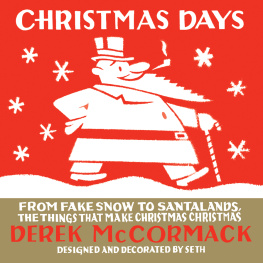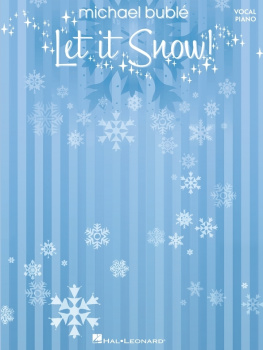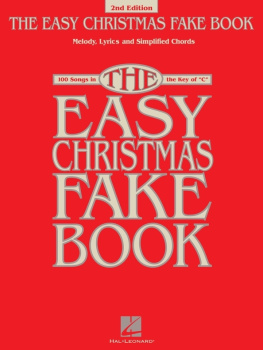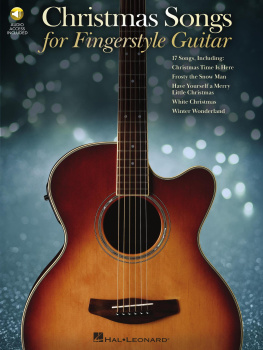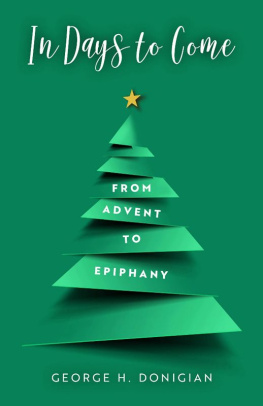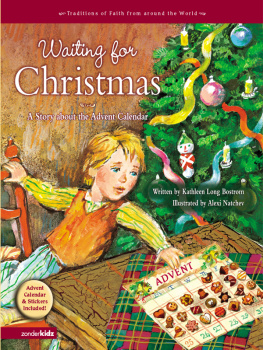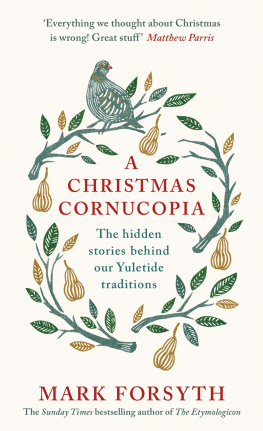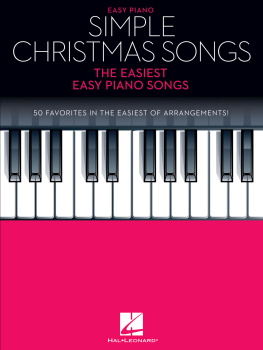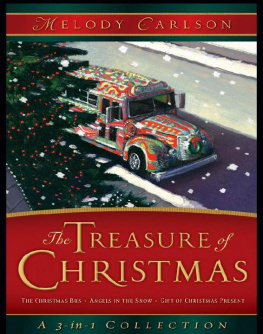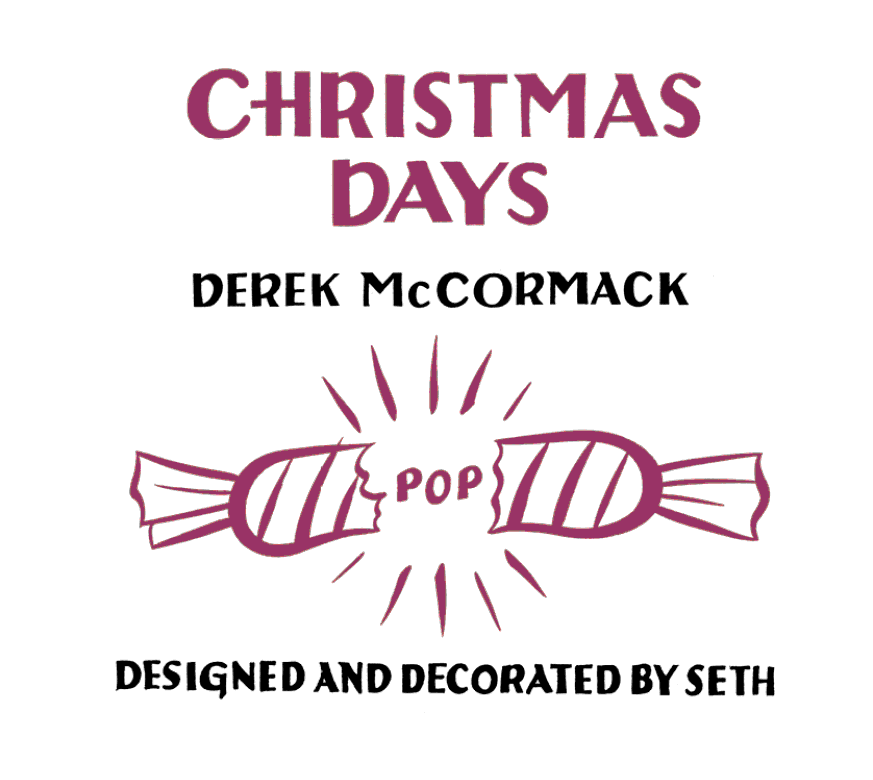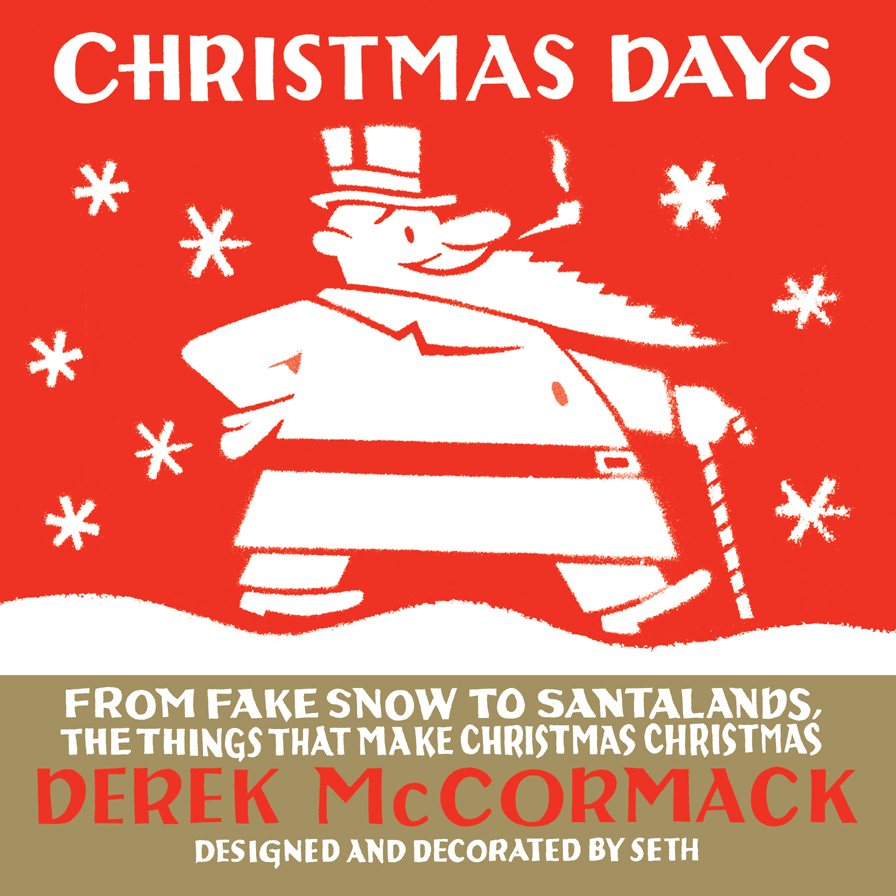
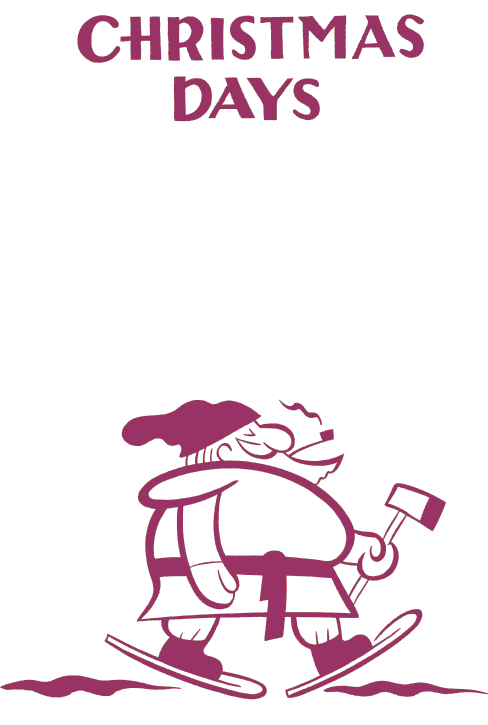
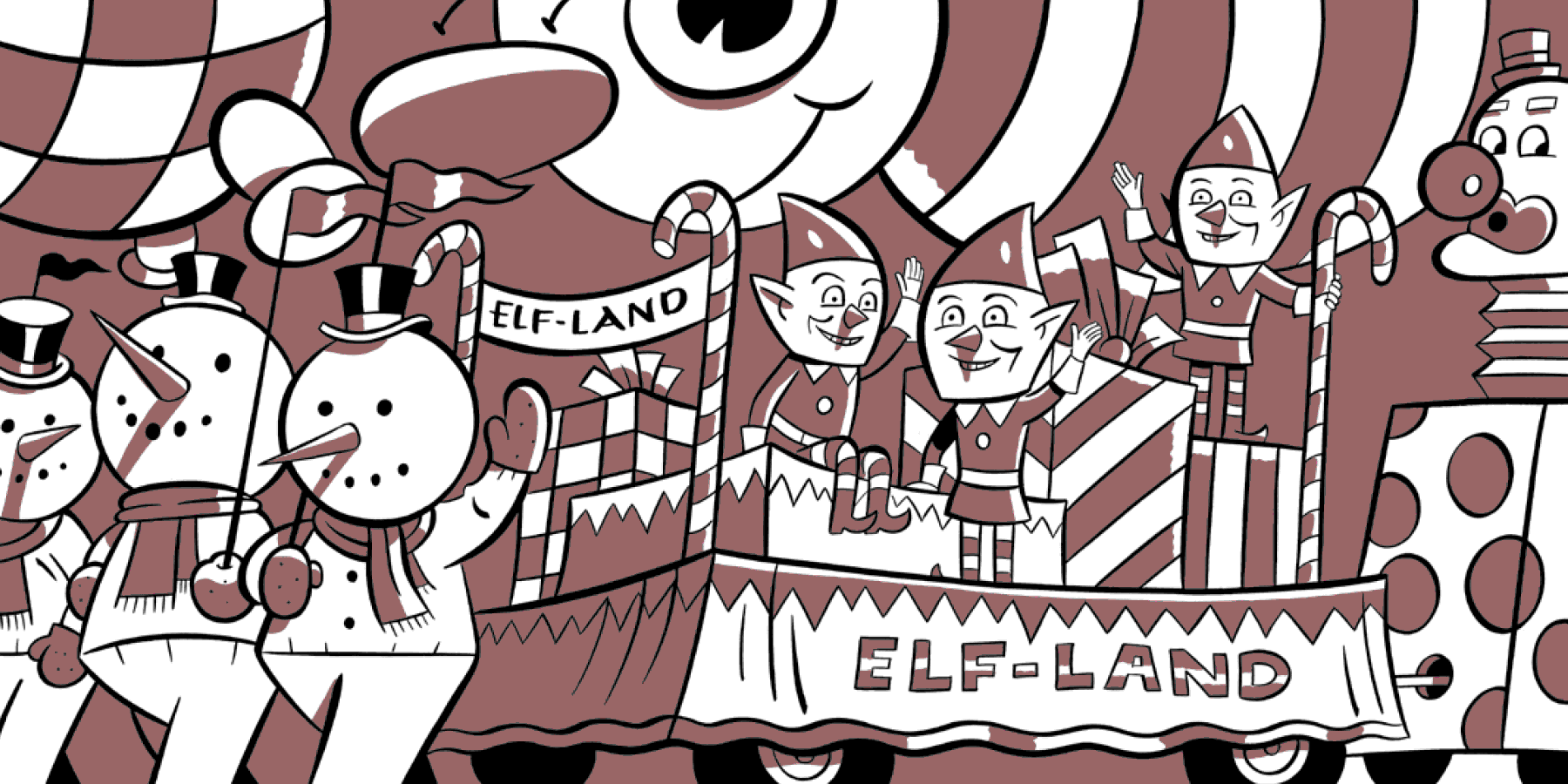
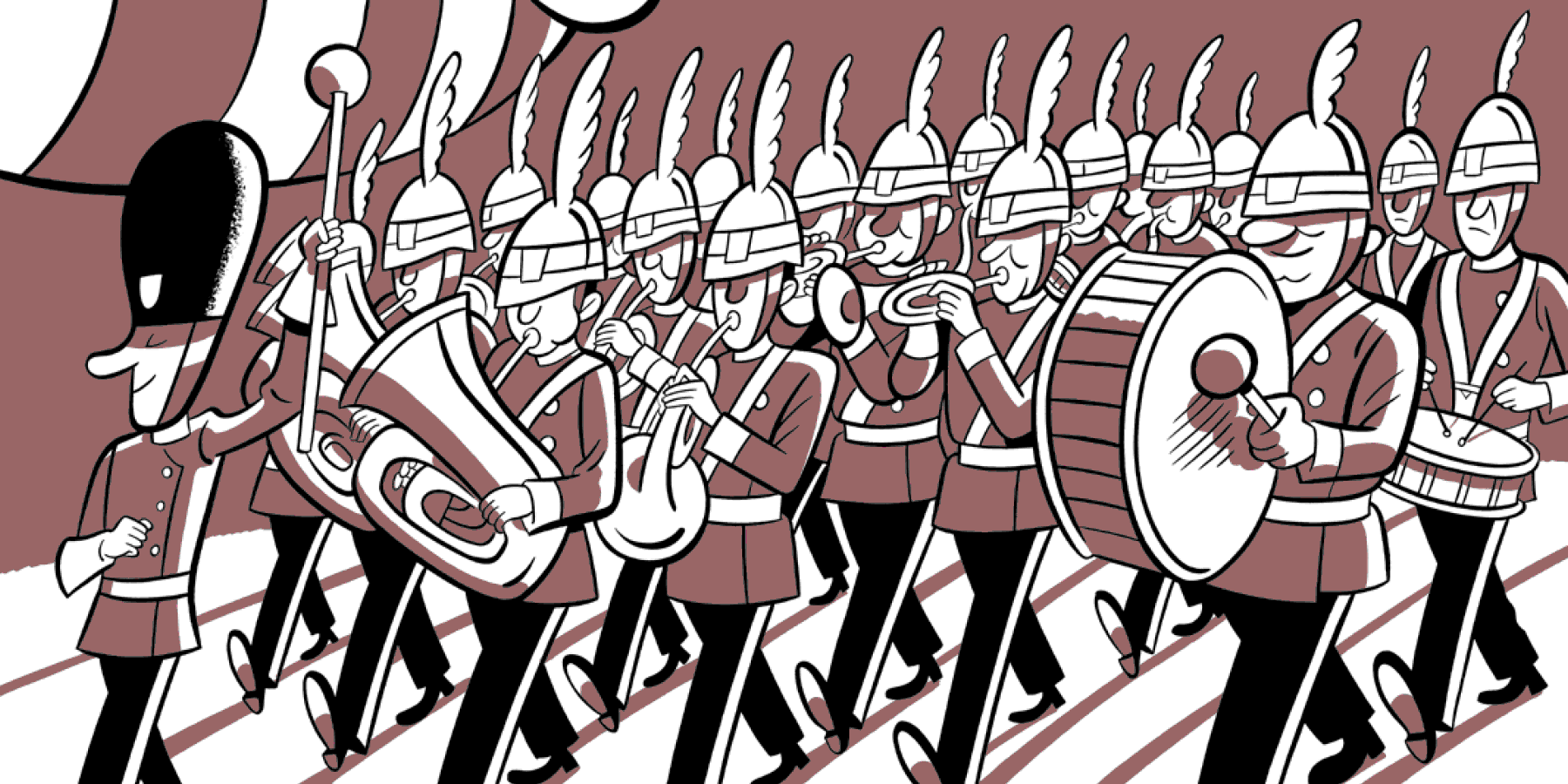


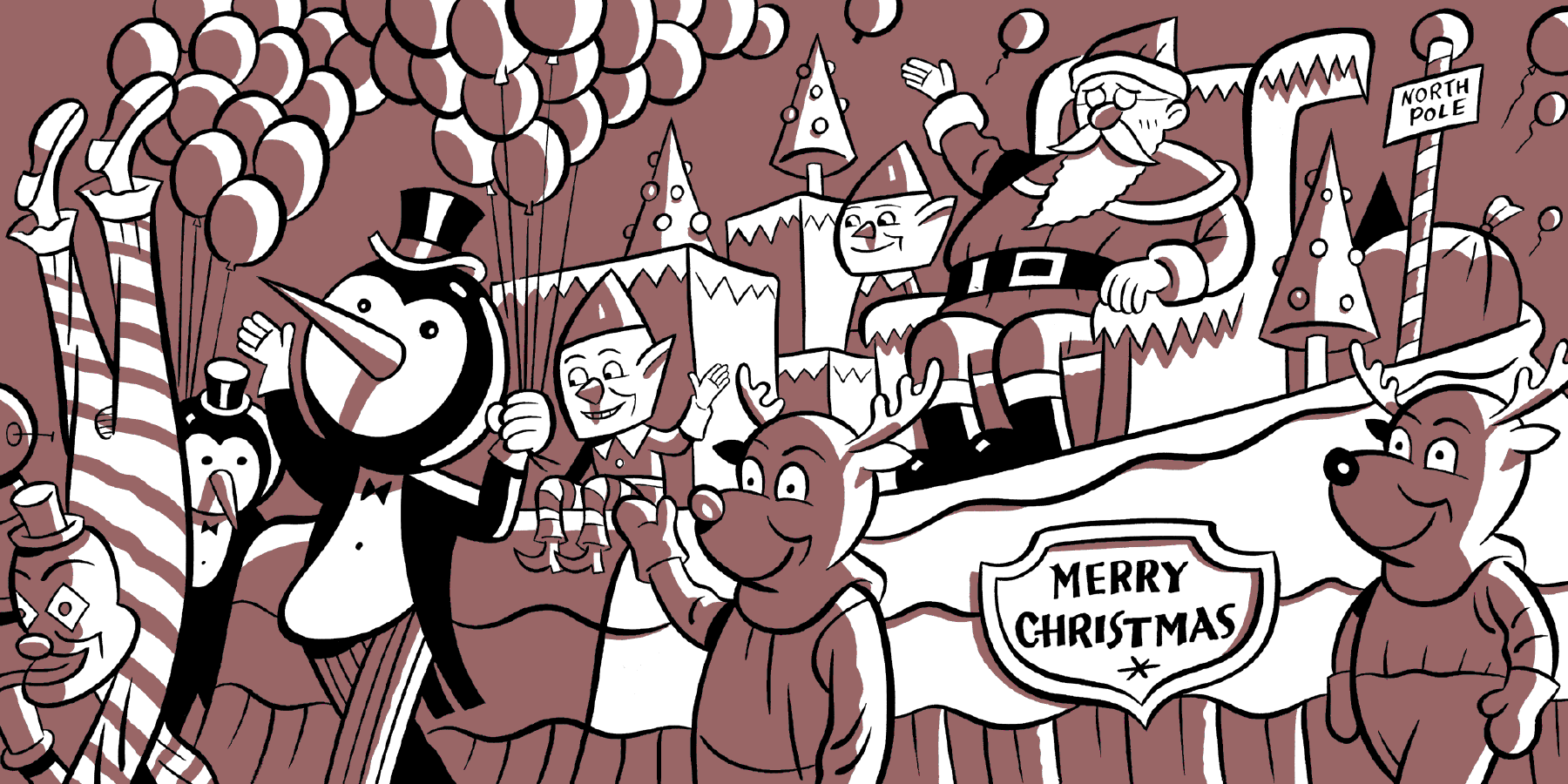
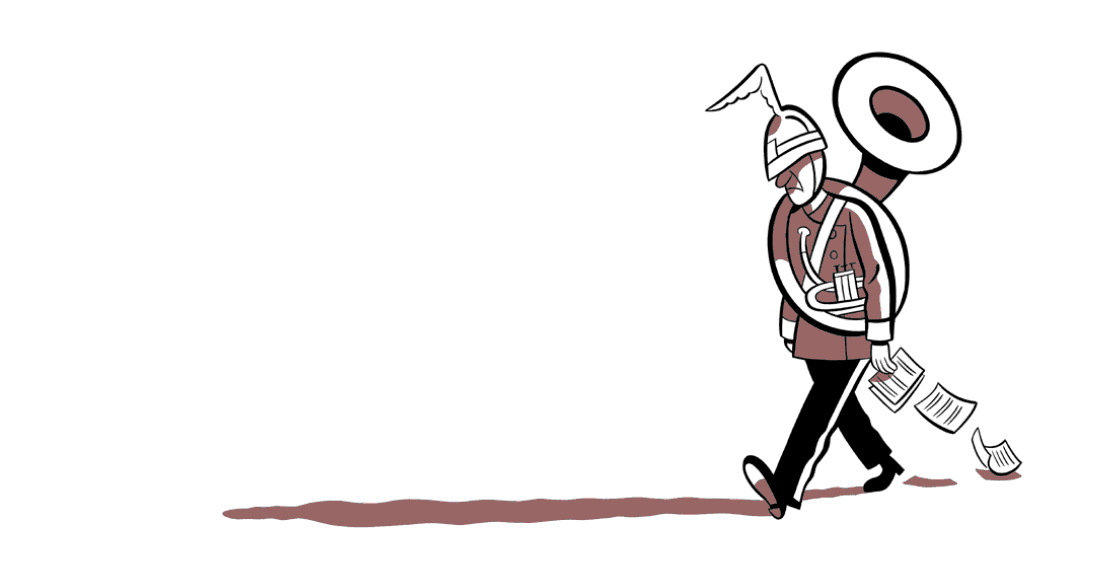
Text copyright 2005 Derek McCormack
Illustrations copyright 2005, 2009 Seth
All rights reserved. No part of this publication may be reproduced ortransmitted in any form or by any means, electronic or mechanical, including photocopying, recording, or any information storage and retrieval system, without permission in writing from the publisher.
Distribution of this electronic edition via the Internet or any other means without the permission of the publisher is illegal. Please do not participate in electronic piracy of copyrighted material; purchase only authorized electronic editions. We appreciate your support of the authors rights.
This edition published in 2012 by
House of Anansi Press Inc.
110 Spadina Avenue, Suite 801
Toronto, ON, M5V 2K4
Tel. 416-363-4343
Fax 416-363-1017
www.houseofanansi.com
Library and Archives Canada Cataloguing in Publication
McCormack, Derek
Christmas days : from fake snow to Santalands, the things that make
Christmas Christmas / Derek McCormack ; [illustrated by] Seth.
ISBN 978-0 88784-946-6 (ePub)
1. Christmas decorations industry Canada History.
2. Christmas Canada History. 3. Canada Social life and customs.
I. Seth, 1962 II. Title.
GT4987.15.M328 2005 394.26630971 C2005-904102-1
Cover design: Seth

We acknowledge for their financial support of our publishing program the Canada Council for the Arts, the Ontario Arts Council, and the Government of Canada through the Canada Book Fund.
Preface
AN ADVENT CALENDAR for me. An Advent calendar for my sister. My mother taped them to the living room wall on Novembers final night. I remember the smell. Glue. I remember the snow. Glitter. It was made of metal. Snow was sharp.
Mom always bought the same kind of calendar: card stock printed with Christmas scenes woods in winter, Santas workshop, a Bavarian village by moonlight. Concealed in the scenes were numbers, one through twenty-four. Each number marked a window. Windows were hidden in fields, flowers, and clouds. A window could be in a tree.
Some kids got toys. A wooden animal a day. At the end of December, theyd amassed a menagerie. Some kids got candies. Their calendar windows concealed chocolates chocolate turkeys, chocolate lambs. Mom always bought us the kind of calendar shed grown up with. I popped open a window per day in December. Hidden behind? Images. Of objects dolls, toy trains, candy canes. Things that make Christmas Christmas.
The traditional kind, Mom called our calendars, meaning theyd been made in Germany, where Advent calendars were invented, and where most of the worlds supply still comes from. Ive never seen a Canadian Advent calendar. What, I wonder, would it look like? White, a sheet of white a snowstorm. Thats the scene Id slap on the front. Glitter galore. As for the hidden objects, theyd need to be iconic, recognizable nationwide. What are the things that make Christmas Christmas in Canada?
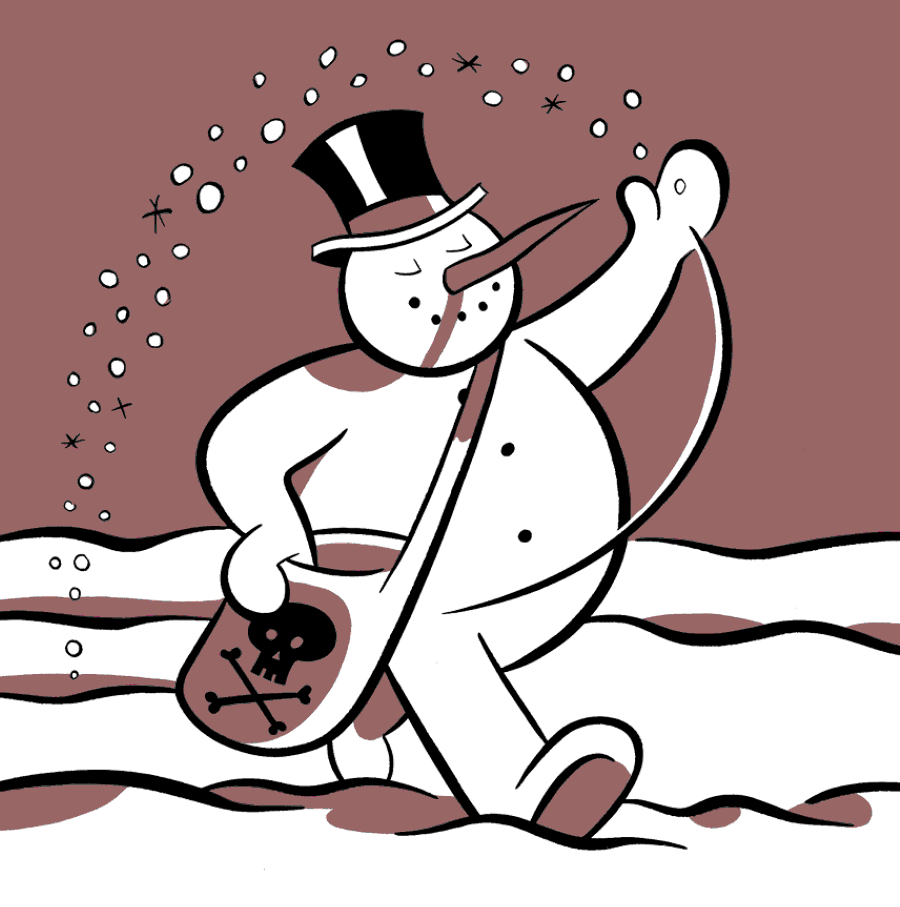
1. FAKE SNOW
A WOMAN WALKS down Fifth Avenue in New York City. Christmas is coming. Its not here yet. The days sunny. Warm.
Snowy. Shes outside Lord & Taylor, the upscale department store. She stares at the show windows. In there, its arctic. Snow is squalling. Mannequins wear winter coats.
The windows are the work of Dana OClare, Lord & Taylors display director. In 1938, he blasted a soundtrack of storm winds out onto the sidewalk. Blizzard windows, he called them, the first windows anywhere to combine sound effects and motion. OClare was twenty-five years old at the time. A show card in a blizzard window read: Its coming sooner or later.
Born and bred in Montreal, OClares blizzard windows were a succs de scandale. The Fifth Avenue Association decried them, worried that motion in displays would cheapen the street. Display World, a trade magazine published by and for window trimmers, disagreed. It claimed that theatrical windows such as OClares made not only the stores customers conscious of display as a vital, interesting factor in selling merchandise, but the general public, the stores employees, and the trade.
OClare frosted his windows with a solution of beer and Epsom salt. A hidden hair dryer blew around barrels of bleached corn flakes.
Most Canadians made fake snow on a smaller scale.
The effect of snow is easily obtained, said the Montreal Gazette in 1882, and gives a very seasonable air to the decorations. The Gazette recommended glass flakes. Fragments of frosted glass, sold by stationers. Canadians sprinkled them onto Christmas trees.
Do-it-yourselfers made it themselves. Pound roughly, or crush with a garden roller, any pieces of glass, such as old bottles, which have been saved up during the summer for this purpose.
Glass snow could cut. Hands. Paws. Cotton was safer, and cotton batting was cheap. In 1885, a factory in Marysville, Quebec, installed cutting-edge cotton-batting machines that spun out up to 200 pounds per day. The Gazette recommended tying tufts of cotton to the tops of tree branches, then teasing. It must then be pulled out and made to look as light and natural as possible, hanging down in irregular points and masses over any projecting parts.
A magazine article suggested using jewellers cotton. It was thinner, easier to handle, and will split in the middle and not present that pressed-down appearance. It cost more, but about one-half the quantity will suffice, and the showing with this imitation snow makes the most brilliant appearance possible.
Decorators recommended cotton. Fire chiefs didnt.
The tree should not be decorated with any inflammable material, such as paper, or cotton, said one safety expert. Dont use cotton to represent snow.
Next page
